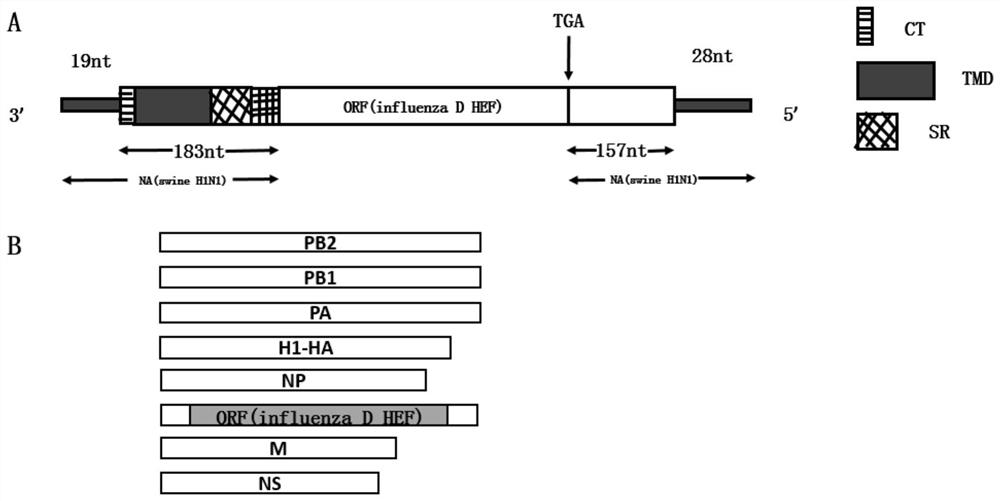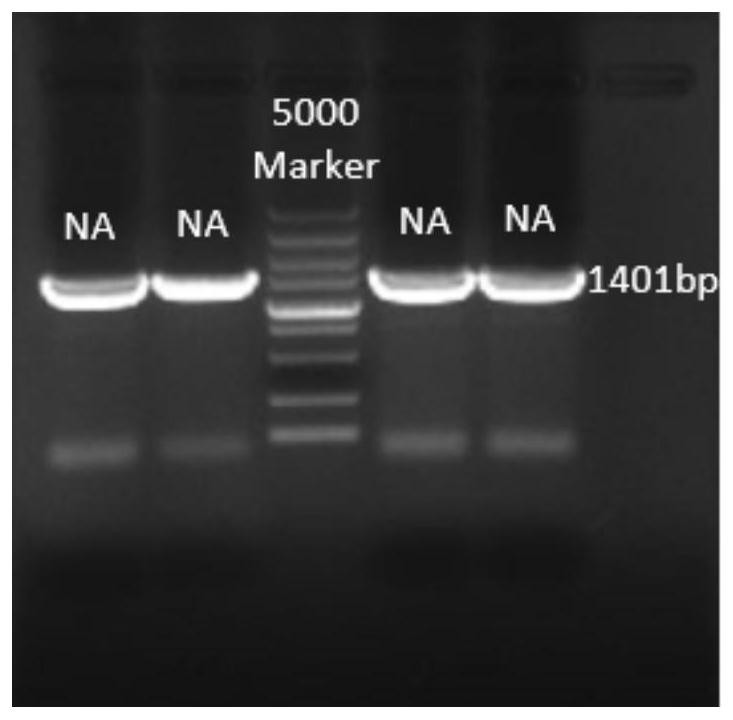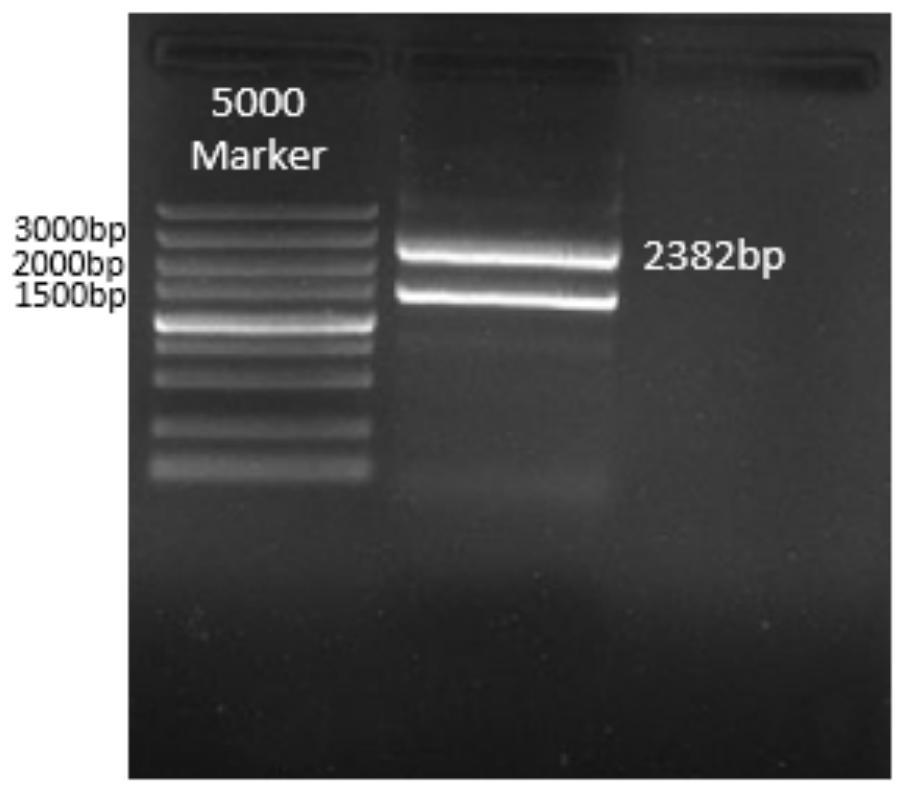A replication-deficient recombinant influenza virus expressing both HA and hef
An influenza virus and recombinant virus technology, applied in the field of influenza virus vaccine technology research and development, can solve the problems of virulence reversion mutation, poor antigenicity, and long period of research and development of low temperature-adapted strains, so as to maintain immunogenicity and strong mucosal immune response. and cellular immune response levels, strong and durable immunogenicity
- Summary
- Abstract
- Description
- Claims
- Application Information
AI Technical Summary
Problems solved by technology
Method used
Image
Examples
Embodiment 1
[0027] 1. Reverse transcribe the RNA fragments of PB2, PB1, PA, HA, NP, M, and NS of type A influenza virus subtype H1N1 in vitro to make cDNA, use the cDNA as a template to amplify the gene fragments of influenza virus, and clone them into Expression vector plasmid pHW2000. Seven plasmids were obtained, namely pHW-PB2, pHW-PB1, pHW-PA, pHW-HA, pHW-NP, pHW-M, and pHW-NS.
[0028] 2. Construction of plasmid pHW-NA-HEF
[0029] The newly constructed plasmid pHW-NA-HEF ( figure 1 ): at first the DNA sequence NA-HEF (Genscript Company) was synthesized, which retained 202 nucleotides of the 3' non-coding region of the H1N1NA fragment of type A influenza virus and 185 nucleotides of the 5' non-coding region Wrap signal. Utilize PCR technology to carry out the amplification of target fragment NA (202nt)-ORF (HEF)-NA (185nt) (such as figure 2 ).
[0030] Upstream primer sequence: TATTGGTCTCAGGGAGCAAAAGCAGGAGT,
[0031] Downstream primer sequence: ATATGGTCTCGTATTAGTAGAAACAAGGAGT...
Embodiment 2
[0034] Embodiment 2 rescues recombinant virus
[0035] Construction of cell lines: construction of MDCK cell lines that can stably express A / Califronia / 2009 / 07 (H1N1) influenza virus surface glycoprotein neuraminidase NA.
[0036] Specific steps are as follows:
[0037] G418 selection of stable expression cell lines:
[0038] Before screening, determine the optimal concentration of G418 for screening MDCK cells is 500 μg / mL.
[0039] Preparation of G418: Dissolve 1g of G418 in 1mL of 1M HEPES solution, add ultrapure water to 10mL, filter, and store at 4°C for later use.
[0040] (1) The RNA fragment of the surface glycoprotein neuraminidase NA of type A influenza virus subtype H1N1 was reverse-transcribed in vitro to make cDNA, and the NA gene fragment of influenza virus was amplified with cDNA as a template, and cloned into the vector plasmid pD2EGFP- on N1. The plasmid pD2EGFP-NA was obtained.
[0041] (2) Spread MDCK cells on a 6-well plate and culture them in MEM medi...
Embodiment 3
[0053] Embodiment 3 tests the growth curve of recombinant virus
[0054] MDCK cells stably expressing NA were cultured in MEM medium containing 10% fetal bovine serum (Fetal Bovine Serum, FBS) and 1% double antibody (Penicillin-Streptomycin Solution, PS) in a 37°C incubator. (Media and serum were purchased from Biological Industries Company.) The transformed MDCK cells were plated in 6-well cell culture plates, 3×10 per well 5 cells, the virus will be amplified when the cell growth density reaches 50%-60%. Before virus amplification, wash the transformed MDCK cells with phosphate buffer saline (Phosphate Buffer Saline, PBS) twice, infect the cells with the recombinant virus with MoI=0.001, and replace it with 2 mL containing 0.2% bovine serum albumin after 1 hour of adsorption. Protein (Bovine SerumActin, BSA) and 1 μg / mL TPCK in MEM culture solution, and then the supernatant was collected at 24, 48 and 72 hours after infection and stored at -80°C.
PUM
 Login to View More
Login to View More Abstract
Description
Claims
Application Information
 Login to View More
Login to View More - R&D
- Intellectual Property
- Life Sciences
- Materials
- Tech Scout
- Unparalleled Data Quality
- Higher Quality Content
- 60% Fewer Hallucinations
Browse by: Latest US Patents, China's latest patents, Technical Efficacy Thesaurus, Application Domain, Technology Topic, Popular Technical Reports.
© 2025 PatSnap. All rights reserved.Legal|Privacy policy|Modern Slavery Act Transparency Statement|Sitemap|About US| Contact US: help@patsnap.com



